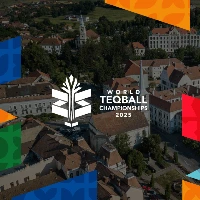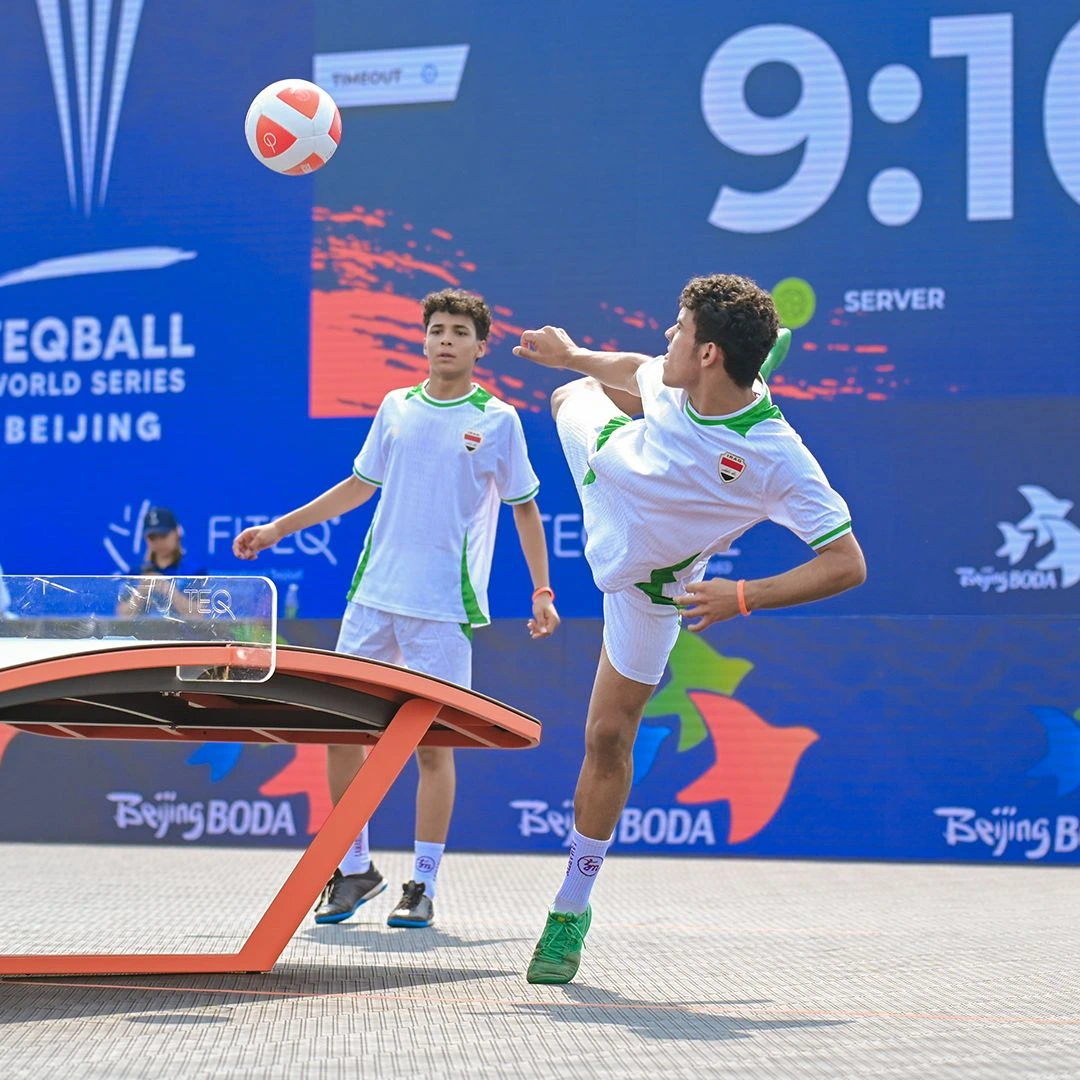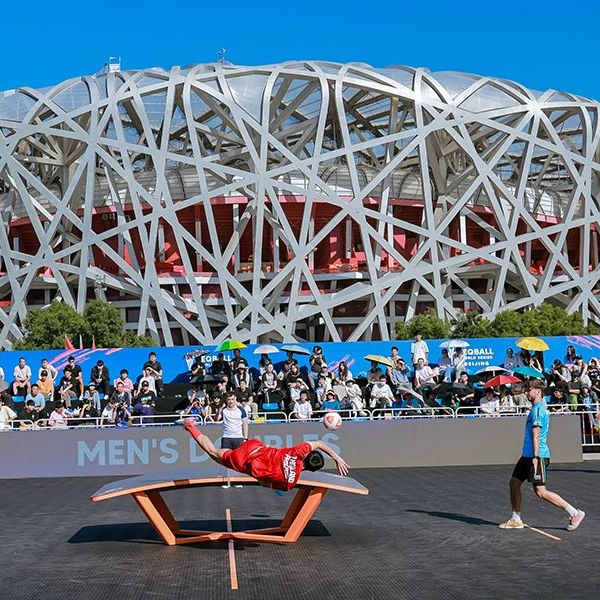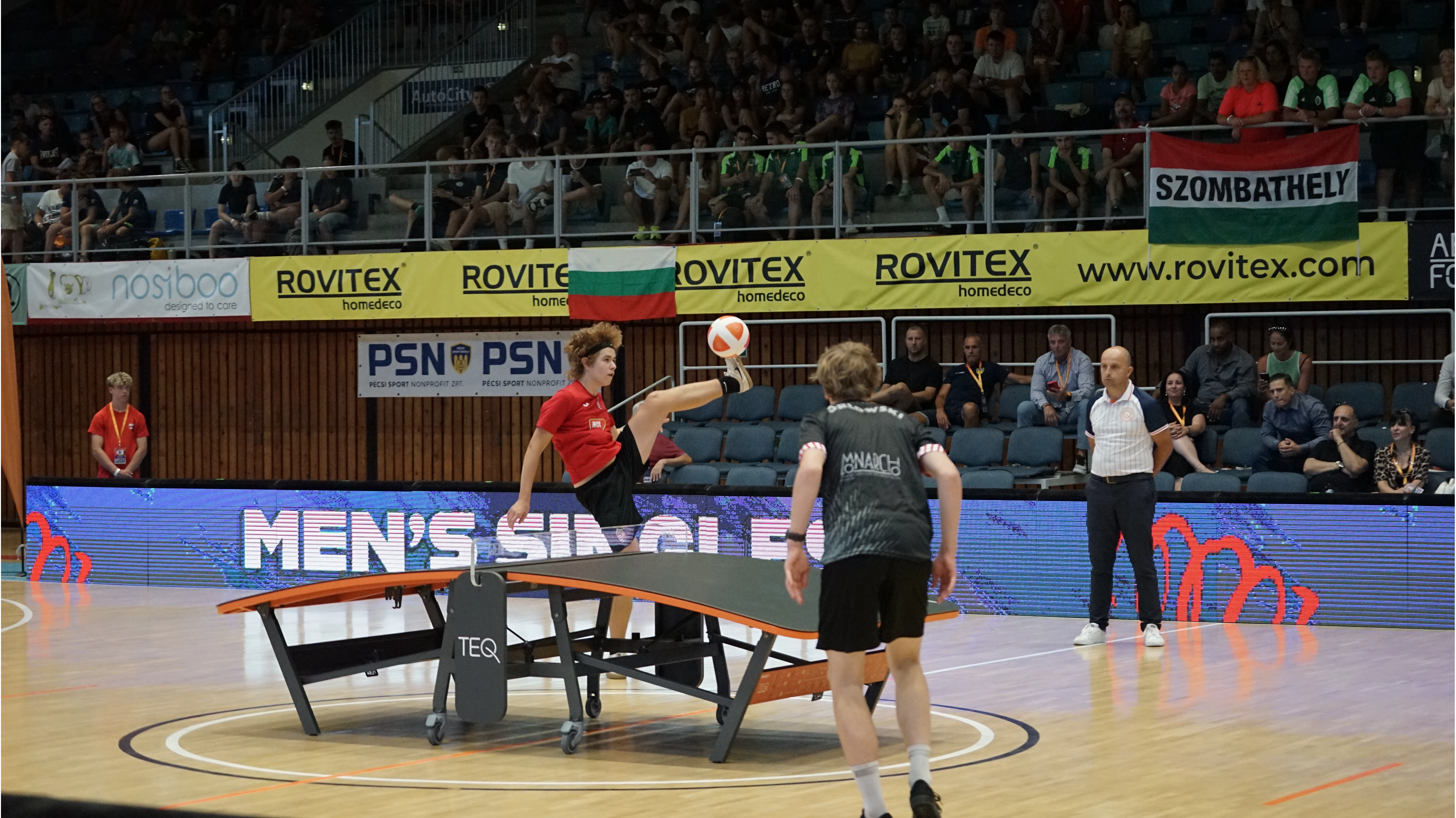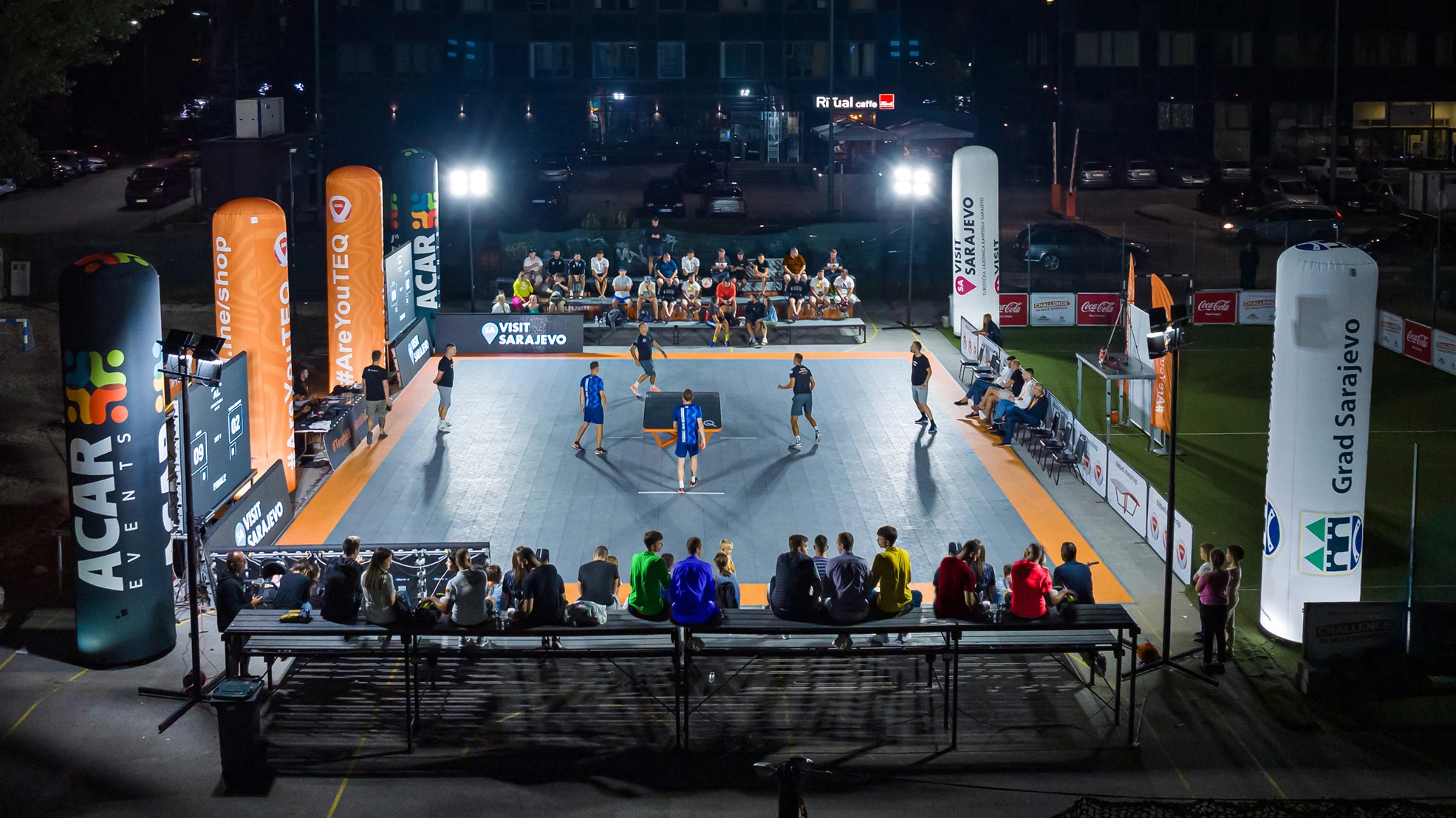
Data-driven study analyses the influence of the service in Teqball
A quantitative study led by data experts in the FITEQ education team has given insight to the influence of the service in the outcome of rallies in Teqball singles. The results of the analysis will act as a useful resource for National Federations and coaches as they look to continue developing the skills of their elite level Teqball players.
The study assesses the probability of winning a point after a successful (in this case meaning legal) first service and a successful second service. Over 2,000 Teqball singles rallies were observed, including edgeballs, which require the point to be repeated. Data from the following four competitions was used: National Challenger Series – Round 2 – Hungary (2020), Cape Verde Challenger Cup (2021), Rácalmás Challenger Cup (2021), Budaörs Challenger Cup (2021).
Three different datasets were compared: the overall data (all rallies), data from matches before the quarter finals, and data from matches after the quarter finals (considered as the highest level of Teqball). The study was looking to establish whether serving can be considered a clear advantage for players, as well as whether this varies at different stages of a competition.
The initial stage was to determine how many first services were successful. Considering all data, 49.7% were successful, whilst 44.3% of second services were successful and 6% were double faults. When looking at all data, 47.2% of points were won by the server, 45% were won by the receiver and 7.8% of rallies were repeated. In the last 8, 50.2% of points were won by the serving player, whilst 42.1% of points were won by the receiving player and 7.6% were repeated. This demonstrates that higher level players are more likely to use their serve to their advantage.
There is also clear correlation between a successful first service and a player winning the point. In matches prior to the quarter finals, 56.7% of successful first services resulted in the serving player winning the point. This rose to 61.7% for matches in the last 8, again showing that the highest level players use their first serve as a distinct advantage. For successful second serves, which tend to be a safer option to avoid double faults, players before the last 8 only won 40.4% of points. This increased to 43.1% in last 8 matches, but the data showed that receiving players win a higher proportion of points that begin with a second serve.
Overall, whilst this study is not exhaustive and only considers singles matches, initial trends on the influence of serving have been established. It can be noted that higher level Teqball players are able to use their service to their advantage more often than players of a lower standard. It is also evident that receiving players have an advantage when the point starts with a second service, even in the later stages of a competition. FITEQ will conduct further studies using data from other singles competitions, as well as data from doubles and mixed doubles matches. The aim will be to add greater credibility to the findings of this study, as well as to establish any variance in the influence of serving in different competition categories, as well as on different surfaces (indoor, outdoor and beach).
Further research and data analysis will follow soon.
The full study can be found HERE.




